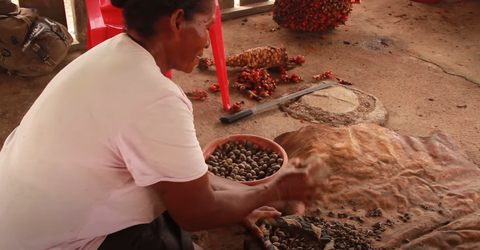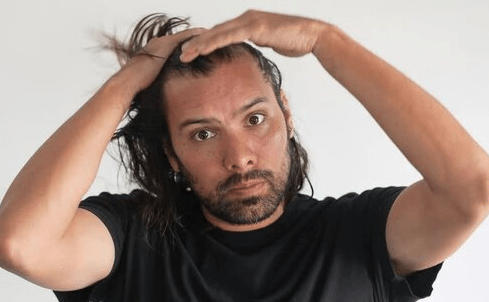How Is Batana Oil Made?
Welcome to the world of Batana oil, a hidden gem in the realm of natural beauty remedies. In this comprehensive guide, we'll delve into the captivating process of how Batana oil is made. This age-old elixir, derived from the fruits of the palm tree, has been cherished for generations for its remarkable benefits for hair and skin. Join us as we explore the history, production, and the wonders of Batana oil.
Step 1:Harvesting Palm Fruits
Batana oil is derived from batana seeds. These seeds are from the Palm Fruit Tree. Thus, she journey of Batana oil begins with the careful selection and harvesting of palm fruits. The Miskito people of Honduras have a unique knowledge of identifying ripe fruits. They carefully pluck the fruits to ensure that they are at the peak of their nutritional value. See the below video of how each tree is carefully selected and harvested.
Step 2: Preparing the Batana Seeds
Start by taking a cup of batana seeds and cleaning them thoroughly. Remove any impurities and let them dry completely. Once dry, use a blender to grind the seeds into a fine powder. This step is crucial, as the finer the powder, the more potent your batana oil will be.
- Cracking the Nuts: The harvested palm fruits are first cracked open to reveal the seeds inside. This step is crucial, as it allows access to the precious kernels.
- Grinding the Kernels: The exposed kernels are then ground into a fine paste. This process can be labor-intensive, but it's necessary to extract the oil.
- Boiling and Fermentation: The paste is then boiled and fermented, releasing the valuable oil. The fermented oil is collected and filtered to remove impurities, resulting in pure Batana oil.

Step 3: Mixing with Carrier Oil
Now, take the ground batana seeds and mix them with your chosen carrier oil. The ratio you should follow is one part batana seed powder to three parts carrier oil. For example, if you have one cup of batana seed powder, mix it with three cups of your chosen carrier oil. Examples of carrier oils are Coconut oil, Jojoba oil, Apricot kernel oil, sweet almond oil, Olive oil, Argan oil and Rosehip oil.
Step 4: Heat the Mixture
Place the mixture in a heatproof container or a double boiler. Heat it over low heat for about 15-20 minutes, stirring occasionally. This heating process allows the batana seeds to infuse their goodness into the carrier oil.

Step 5: Straining the Oil
After heating, let the mixture cool down to room temperature. Once it has cooled, strain the oil through a fine sieve or cheesecloth to remove any remaining seed particles. This will leave you with a pure batana oil.
Step 6: Storing the Oil
Transfer the strained batana oil into a glass container with a lid. Ensure that the container is airtight to prevent air and light from affecting the oil's quality. Store it in a cool, dark place, like a cupboard or pantry.
Step 7: Wait for Infusion
Allow the oil to sit for at least two weeks. During this time, the oil will continue to infuse with the beneficial properties of the batana seeds, becoming even more potent and effective.
Step 8: Ready for Use
After the waiting period, your homemade batana oil will be ready for use. You can now apply it to your hair and skin to enjoy its numerous benefits. You can buy our ready made batana oil.


